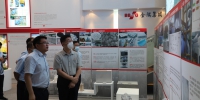[Global Times]Wang Wen:Belt and road initiative making steady progress, concerns about risks overstated
Over the past two years, my colleagues and I have been to nearly 20 countries and regions, and also dozens of cities in China, conducting surveys on China’s “One Belt, One Road” initiative.
The institution I’m working with has also held a host of events related to the initiative, after which I have gained a sense of some discrepancies forming between the progress that has been made on the initiative and the way it is being presented in media reports.
First, China’s strategic ambitions for the “One Belt, One Road” initiative have been exaggerated. There has been some foreign media speculation that China aims to build a new empire and gain greater influence over the continents of Europe and Asia through the initiative. This is a huge misunderstanding, and one that could develop into a new version of the “China threat theory.”
In fact, what was jointly launched by the National Development and Reform Commission, the Ministry of Foreign Affairs, and the Ministry of Commerce is merely a vision of the initiative and an action plan, while guidelines at the central government level are yet to be released. The implementation of the “One Belt, One Road” initiative will be a gradual process over a substantial period of time.
Second, the potential risks associated with the initiative and the resistance to it have been blown out of proportion. Media outlets have expressed concerns about these areas. But with new things there are always some risks. That’s particularly the case when it comes to investing. But risks are often proportional to potential returns and firms with higher risk appetite also have a higher awareness of risk prevention.
Third, the divergence in opinions about how to rebuild the Silk Road trade links has also been overstated. At least nine countries have announced strategic plans related to the Silk Road and the plans are not all similar, but neither do they all contradict each other. These are groundless worries, if not an attempt to deliberately blacken the reputation of the initiative.
These three misunderstandings illustrate that study of and knowledge about the initiative are not specific enough. The initiative should be based on market-oriented economics, and is a Chinese-style solution for the development issues in Central Asia, South Asia, West Asia, and Southeast Asia.
China’s efforts made under the initiative have mostly received positive responses so far, and occasional problems can be solved through communication and cooperation.
Apart from strengthening more specific study of the plan, efforts should also be made to make full use of people with knowledge and expertise relevant to the initiative. Currently, the number of Chinese people who are working in countries along the route of the initiative is around 1 million, many of whom are familiar with the local cultures and languages, and also have connections there. Making better use of these people would help to advance the implementation and integration of the “One Belt, One Road” initiative.
The author is executive dean of the Chongyang Institute for Financial Studies at the Renmin University of China.
[原文链接]
[Global Times]Belt and road initiative making steady progress, concerns about risks overstated
